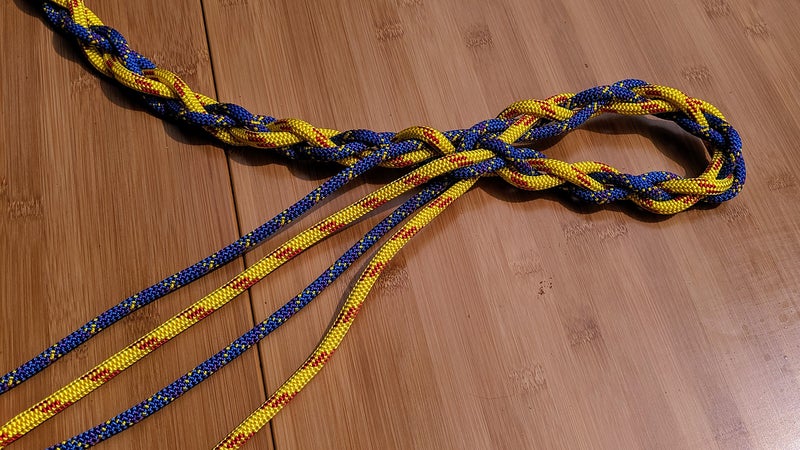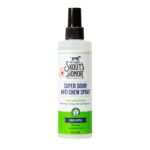DIY Dog Harness with Rope for Hiking Adventures: Step-by-Step Guide (Continued)
In the previous section, we discussed how to create your own DIY dog harness with rope for hiking adventures. We covered the necessary materials, how to measure and cut the rope, and how to tie the Spanish bowline knot. Now, let’s move on to finalizing your harness with adjustments, testing, and tips to make sure it’s the perfect fit for your dog’s hiking needs.
Final Adjustments and Testing the DIY Dog Harness
After completing the knotting and adjusting, it’s time to make sure everything is secure and comfortable for your furry friend. Let’s take a closer look at how to fine-tune the harness for the best fit and safety.
Make Final Adjustments for Comfort and Security
Once you’ve created the basic structure of your DIY dog harness with rope, it’s essential to fine-tune the fit to ensure your dog’s comfort during the hike. Here are a few steps to make the final adjustments:
- Chest Strap Adjustment: Ensure the chest strap is snug but not tight. It should lie comfortably across your dog’s chest without restricting their breathing. A good rule of thumb is that you should be able to fit two fingers between the harness and your dog’s chest.
- Leg Loops: Double-check the leg loops around your dog’s legs. They should fit snugly but not too tight. The harness should not constrict their movement, especially as they climb, jump, or run during hikes.
- Even Distribution of Pressure: Make sure that when you pull on the harness, the pressure is distributed evenly across your dog’s chest and not concentrated on one area. This is why the Spanish bowline knot is ideal—it ensures the harness is both adjustable and evenly pressurized.
Pro Tip: If the harness seems uneven or too tight in certain spots, make incremental adjustments until it fits comfortably.
Testing the DIY Dog Harness
Before heading out for a hike, testing the DIY dog harness is a crucial step to ensure it functions as expected. Follow these steps:
- Gently Pull on the Harness: Test how the harness holds up by gently pulling on it. Ensure that the loops stay in place and the harness doesn’t constrict. The harness should move with your dog, not against them.
- Test for Comfort: While your dog is wearing the harness, observe their movements. They should be able to walk, run, and play without any discomfort or restriction.
- Check for Adjustments: After a few minutes of testing, recheck the adjustments to ensure the harness hasn’t loosened or shifted. Sometimes a harness will loosen after a few pulls, so it’s important to adjust accordingly.
Once you’re satisfied with the fit and security, your DIY dog harness is ready for the hiking trails!

Tips for Using Your DIY Dog Harness on Hiking Adventures
Now that your DIY dog harness is ready, let’s ensure you get the most out of it during your hiking adventures. Here are some helpful tips for safe and enjoyable hikes with your dog:
1. Use Reflective Rope for Visibility
If you plan to hike in low-light conditions, such as early mornings, evenings, or cloudy days, it’s a good idea to use reflective or brightly colored rope for your dog’s harness. Reflective rope helps make your dog visible to other hikers, cyclists, or even vehicles, improving safety on the trail.
- Tip: Some climbing ropes come with reflective threads woven into them, which is ideal for nighttime visibility.
- External Link: Check out Reflective Hiking Gear for visibility options.
2. Hydrate Your Dog
Hiking can be physically demanding, especially for dogs. Make sure to carry enough water for both you and your dog. Dogs need to stay hydrated during long hikes, and providing water every 30-45 minutes is a good practice.
- Tip: Invest in a portable dog water bottle or collapsible bowl that’s easy to carry along.
3. Supervise Your Dog While Hiking
Even if the harness is secure, always supervise your dog during the hike. Dogs can get distracted, especially in new environments. Keep an eye on them to ensure they don’t get tangled in the harness or encounter any dangerous situations.
4. Carry Dog-Friendly Hiking Gear
If you’re venturing into rough terrain, consider adding additional dog-friendly hiking gear like booties to protect their paws or a dog backpack for carrying their essentials. These items can make the hike more comfortable and enjoyable for your furry companion.
- Tip: Ensure any added gear is lightweight and comfortable for your dog, as hiking can be tiring for them as well.
5. Check for Chafing
Even with a well-fitting harness, prolonged use can sometimes lead to chafing. After a hike, check your dog’s skin for any signs of irritation, especially in areas where the harness may rub. If you notice any discomfort, loosen the harness or adjust the fit.
FAQs about DIY Dog Harness with Rope for Hiking Adventures
1. Is a DIY dog harness safe for hiking?
Yes, a DIY dog harness with rope is safe for hiking, as long as it is properly fitted and made from durable material. Always ensure that the harness fits snugly around your dog’s chest and legs without restricting movement or causing discomfort.
2. How long does it take to make a DIY dog harness?
The process of making a DIY dog harness typically takes around 30-60 minutes, depending on your knot-tying skills and the size of your dog. Afterward, don’t forget to test the harness for comfort and fit.
3. Can I use any type of rope for the harness?
It’s important to choose a sturdy rope, such as climbing rope or paracord, which is strong and durable enough to withstand the pressure from your dog’s movements. Avoid using thin or flimsy rope, as it may not provide the necessary support during outdoor adventures.
4. How can I ensure the harness is comfortable for my dog?
To ensure the comfort of your dog, make sure the loops around the legs and chest are adjustable and not too tight. The harness should distribute pressure evenly, especially when the dog pulls on the leash. Always check the fit after your dog wears it to ensure it’s neither too loose nor too tight.
Conclusion: Why a DIY Dog Harness is the Best Choice for Hiking Adventures
Creating a DIY dog harness with rope for your hiking adventures offers both practical and financial benefits. Not only is it an affordable alternative to store-bought options, but it also provides the opportunity for customization to fit your dog’s specific needs. With the Spanish bowline knot, this harness ensures a secure, adjustable, and evenly distributed fit that will keep your dog comfortable and safe during hikes.
By following the simple steps outlined in this guide, you can create a durable, functional, and personalized dog harness that will make every hiking adventure enjoyable for both you and your furry friend.
Remember to always test the harness, adjust it for comfort, and ensure your dog is hydrated and well-supervised during your outdoor activities. With the right gear and preparation, your dog hiking adventures will be full of fun, exploration, and lasting memories.
Call to Action: Ready to start making your own DIY dog harness for hiking adventures? Gather the materials, follow the steps, and embark on your next outdoor adventure with your dog in style and comfort.

By making a DIY dog harness with rope, you’re not just ensuring a secure fit for your dog—you’re also gaining peace of mind during every hiking trip. Take the plunge, get creative, and enjoy your hikes with your dog today!
https://cdn.outsideonline.com/wp-content/uploads/2019/06/26/dog-leash-6.jpg?width=800



